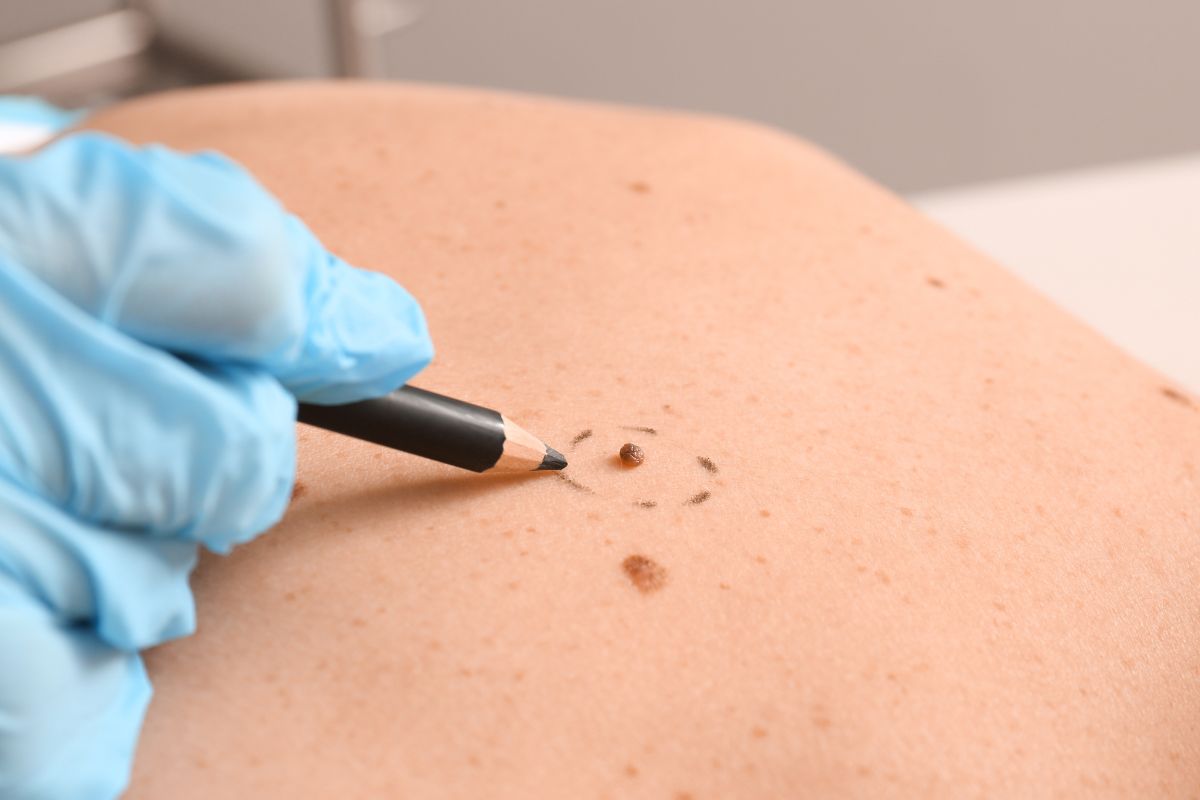As with the vast majority of medical procedures, mole removal involves a complicated process that requires a physician to make specific judgments on the basis of your individual case.
The shape, location, and size of the mole will vary depending on the individual.
Thus, these factors may influence the overall cost of the mole’s removal. If a mole poses a risk of being cancerous, then your physician may need to adopt a more aggressive technique in order to remove it.
Fortunately, this type of removal is usually covered by medical insurance. Whereas, mole removals that occur for cosmetic reasons, are less likely to be covered by medical insurance.
Table of contents
How Much Does Mole Removal Usually Cost?
The vast majority of these factors will vary from person to person, and this changes the overall cost of this procedure.
Usually, the more complicated that the procedure is, the higher the cost of the procedure will be.
This is why it is important that you consult with your doctor prior to removing your mole as your doctor will be able to succinctly evaluate the best course of action for you.
Once a medical professional has thoroughly evaluated your mole and determined the best healthcare plan for you, you will then be provided with an estimate for the cost of the removal procedure.
Does The Cost of Mole Removal Change If It Is Potentially Cancerous?
The vast majority of moles are removed using a procedure known as radiofrequency cauterisation.
Although, any moles that are deemed to be potentially cancerous or abnormal in shape, size, or location may require a surgical procedure for removal.
A biopsy may also be performed during this process. The diagnosis and treatment plan set out for cancerous moles is covered by most medical insurance plans as it is deemed a medically-essential procedure.
Can Insurance Be Used To Cover The Cost of Mole Removal?
Unfortunately for most people, the vast majority of unwanted moles are considered to be cosmetic issues as opposed to medical concerns.
Thus, medical insurance can normally only be used in moles that are atypically symptomatic, pre-cancerous, or cancerous.
When this is not the case, mole removal is classified as a cosmetic procedure which will need to be paid for by the patient themselves.
The cost will vary depending on the location, size, and shape of the mole, as well as the number of moles that need to be removed. The same applies for any skin tag removal procedures.
Is It A Normal Mole Or A Cancerous Mole?

Whenever pigment cells are functioning well, then a mole is considered to be benign. However, there is always the chance that these cells may transform into something that is cancerous.
Moles that are atypical are normally larger than most moles, or they will develop unusual features that include a multitude of colors or uneven edges.
Whilst having an atypical mole isn’t considered to be skin cancer, it does increase the risk of developing melanoma.
It is pretty rare for any pre-existing mole to develop into melanoma as only 1 in 10,000 will do so.
However, melanoma is the most dangerous type of skin cancer as it can easily spread into the lymph nodes and across other parts of the body.
Luckily, it is highly treatable whenever it is caught at an earlier stage of development. However, it is also better to remove them as early as possible to avoid the potentiality of melanoma occurring.
Unless you are a medical professional, you may be unsure as to whether am ole is harmless or cancerous. This is why dermatologists have derived a number of ways to help you spot the early warning signs.
The most common of these is the ugly duckling sign. This name is given because the mole stands out as being entirely different in comparison to the other moles on the body.
Another guide that dermatologists use to ascertain whether a mole is dangerous or not is the ABCDE mnemonic. The five signs contained within this metric include the following:
1. Asymmetry
If you drew a line across the center of a healthy mole, then one side of the mole should be the spitting image of the other. If it is not, it could be potentially cancerous.
2. Border
Most moles will be smooth and have even borders. However, more atypical moles will have jagged edges.
3. Coloration
Any mole that is black, tan, or a brown color is normally benign. However, any mole that contains more than three colors within it or that changes in coloration, would be considered dangerous.
4. Diameter
Moles that measure at 6 millimeters or more in diameter will also need to be closely monitored and thoroughly examined.
5. Evolution
Evolution is also a possible sign that your mole is cancerous. If it has changed color or begins to itch, then you should definitely consult with your doctor about mole removal.
How Much Does It Cost To Remove A Mole For Cosmetic Reasons?
The typical cost of removing a mole in the United States will vary. The cost usually sits between $150-$400. This cost is dependent on the size and location of the mole itself.
As well as the type of procedure that is required in order to remove the mole. The location of the practitioner will also impact on the cost of the procedure.
As cosmetic procedures aren’t covered by medical insurance, the price of removal will depend upon the payment plan that has been established.
Some insurers may only cover the cost of a certain percentage of intervention, whilst others will not cover the cost of mole removals at all.
However, most insurers will cover the cost of mole removal if the mole has been deemed a medical concern.
Conclusion
To conclude, moles that are deemed medically dangerous or potentially dangerous are usually covered by medical insurance policies.
However, any mole that is being removed for cosmetic reasons is not normally covered by medical insurance providers.
